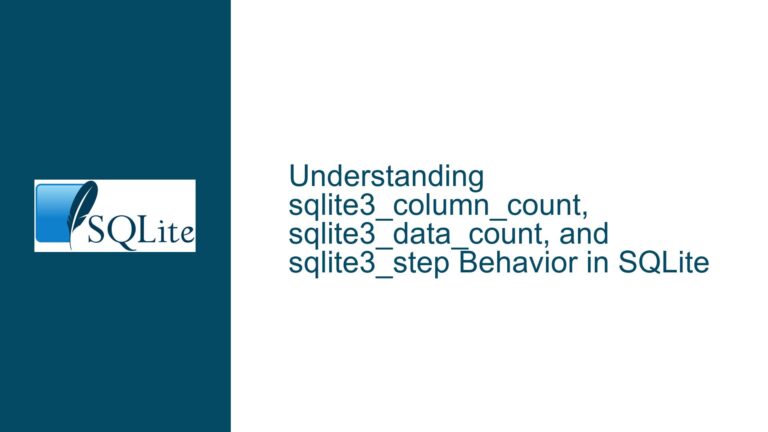Calculating Win Amount and POP Using Previous Row Data in SQLite
Understanding the Data Structure and Calculation Requirements
The core issue revolves around calculating two key metrics: winAmount and POP (Percentage of Profit) for each betAmount value in a dataset where relevant data is split across two types of rows: Purchase Started Pre Purchase Balance and Game Completed Final Balance. The Purchase Started Pre Purchase Balance rows contain the betAmount, while the Game Completed Final Balance rows contain the winAmount and endBalance. The challenge lies in correlating these rows to perform the necessary calculations.
The dataset is structured such that each Purchase Started Pre Purchase Balance row is immediately followed by a Game Completed Final Balance row. This pairing is crucial for accurate calculations, as the winAmount and endBalance in the latter row correspond to the betAmount in the former row. The goal is to aggregate these paired rows to calculate the total winAmount and POP for each unique betAmount.
The POP calculation requires summing the winAmount and dividing it by the total betAmount, then multiplying by 100 to get a percentage. This calculation must be performed for each betAmount value, which necessitates grouping the data by betAmount and summing the relevant fields.
Identifying the Challenges in the Current Query
The initial query provided in the discussion attempts to calculate the required metrics but falls short due to several issues. The query uses a subquery to aggregate data by betAmount, but it fails to correctly correlate the Purchase Started Pre Purchase Balance and Game Completed Final Balance rows. This results in incorrect aggregations, as evidenced by the output where winAmount and POP are either missing or incorrectly calculated.
One of the primary issues is the lack of a mechanism to link the betAmount from the Purchase Started Pre Purchase Balance row to the winAmount and endBalance in the subsequent Game Completed Final Balance row. The query also includes redundant and inefficient use of CASE expressions, which could be simplified for better performance and readability.
Another challenge is the incorrect use of window functions. The initial query does not utilize window functions effectively to correlate the rows, leading to inaccurate results. The lag function, which is essential for accessing data from the previous row, is either misused or not used at all in the initial query.
Implementing a Robust Solution with Window Functions and Proper Aggregation
To address these challenges, a robust solution involves using window functions to correctly correlate the Purchase Started Pre Purchase Balance and Game Completed Final Balance rows. The lag function is particularly useful here, as it allows us to access data from the previous row, enabling us to pair the betAmount with the corresponding winAmount and endBalance.
The solution begins by creating a Common Table Expression (CTE) named fuse2, which uses the lag function to create a unified view of the data. This CTE pairs each Game Completed Final Balance row with the preceding Purchase Started Pre Purchase Balance row, effectively creating a single row that contains both the betAmount and the corresponding winAmount and endBalance.
Once the data is correctly paired, another CTE named unified_rows is created to extract the relevant fields (betAmount, winAmount, and endBalance) from the fuse2 CTE. This CTE filters out rows where the type is not Game Completed Final Balance, ensuring that only the relevant paired rows are included in the final calculation.
The final step involves aggregating the data by betAmount to calculate the total winAmount and the count of bets for each betAmount. This is achieved using a GROUP BY clause, which groups the data by betAmount and calculates the sum of winAmount and the count of bets for each group.
The corrected query also addresses the inefficiencies in the initial query by simplifying the CASE expressions. Instead of using CASE to count rows, the query uses a more efficient boolean expression, which is both simpler and more performant.
Final Query and Results
The final query, as provided by Rico Mariani, is as follows:
create table data (
type text,
betAmount real,
winAmount real,
endBalance real
);
delete from data;
insert into data values
('Purchase Started Pre Purchase Balance',0.25,NULL,NULL),
('Game Completed Final Balance',NULL,0.0,299.75),
('Purchase Started Pre Purchase Balance',0.25,NULL,NULL),
('Game Completed Final Balance',NULL,0.5,300.0),
('Purchase Started Pre Purchase Balance',0.25,NULL,NULL),
('Game Completed Final Balance',NULL,0.0,299.75),
('Purchase Started Pre Purchase Balance',1.0,NULL,NULL),
('Game Completed Final Balance',NULL,0.6,299.35),
('Purchase Started Pre Purchase Balance',1.0,NULL,NULL),
('Game Completed Final Balance',NULL,0.2,298.55),
('Purchase Started Pre Purchase Balance',1.0,NULL,NULL),
('Game Completed Final Balance',NULL,0.6,298.15);
with fuse2(t1, b1, w1, e1, t2, b2, w2, e2) as (
select
type,
betAmount,
winAmount,
endBalance,
lag(type) OVER win1,
lag(betAmount) OVER win1,
lag(winAmount) OVER win1,
lag(endBalance) OVER win1
from data
window win1 as (order by rowid)
),
unified_rows(bet, win, end) as (
select b2, w1, e1 from fuse2
where fuse2.t1 = 'Game Completed Final Balance'
)
select bet, count(bet), sum(win) from unified_rows
group by bet;
The results of this query are:
0.25|3|0.5
1.0|3|1.4
These results correctly show the total winAmount and the count of bets for each betAmount, demonstrating that the solution effectively correlates the rows and performs the necessary calculations.
Conclusion
The key to solving this problem lies in understanding the structure of the data and using the appropriate SQLite functions to correlate and aggregate the data correctly. By leveraging window functions like lag and simplifying the query logic, we can achieve accurate and efficient results. This approach not only addresses the immediate issue but also provides a framework for handling similar data correlation challenges in the future.






